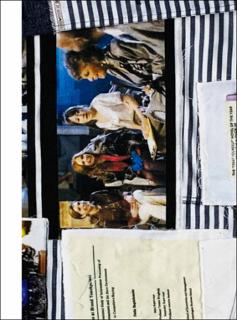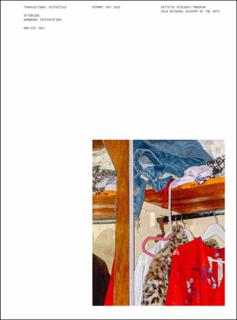| dc.contributor.author | Øien, Ida Falck | |
| dc.date.accessioned | 2022-06-23T10:40:18Z | |
| dc.date.available | 2022-06-23T10:40:18Z | |
| dc.date.issued | 2022 | |
| dc.identifier.isbn | 9788270384204 | |
| dc.identifier.uri | https://hdl.handle.net/11250/3000221 | |
| dc.description | This publication is the written reflection of my PhD project, Transactional Aesthetics, that took place in the artistic research program at Oslo National Academy of the Arts, from 2017 until 2021. It makes for one third of my final delivery, which consists of
this publication, an online appendix, and nine case studies, out of which one will be presented live at the moment of assessment, december 4 2021. | en_US |
| dc.description.abstract | The project Transactional Aesthetics looks into models of transactionship focusing on value transitions, in order to explore possible influences on the dynamics of human-garment relationships. To understand the rationale underpinning varying longevity of constituents making up a wardrobe I am exploring the ways in which they got there. Can the mode of acquiring possessions give direction to or exert influence on the un/conscious emotional relationship that humans have to them? How can knowledge in this field, enrich, direct and show new paths for fashion design today, exemplified in the work with a brand in Norway in the period of 2018 to 2021.
I am questioning the role of the clothing designer in an increasingly apparent crisis of worldwide garment overflow. After ten years in fashion, I am motivated by the challenge of having been a small scale player in a saturated market place for many years, the current development of consumer manipulation reaching ever increasing heights with new technological advances, and a looming environmental tipping point. The garment industry (i.e. fashion industry) is the second largest polluter today. This can´t be solved only by offering organic slogan T-shirts or high street stores arranging a repair day once a year. Fashion is more than the actual garment or piece of accessory; it´s a social phenomenon, experience-based and made from multiple layers of culture and commerce. Furthermore, fashion´s selfproclaimed identity as constantly hungry for newness could make good conditions for rethinking the use of resources both human and material in surprising ways.
Over the 3 year period as a fellow I am unfolding a broad understanding of transaction vs usership through a series of inquiries and disruptions in four parallel and perennial processes; 1) the use of ethnographic strategies, like wardrobe studies, interviews and fieldwork; 2) a close collaboration with a fashion label developing garments to insert as responses to finds and questions based in the interviews, 3) running a brick and mortar space open to the public in which collaborative and autonomous guest appearances revolving around transactionship take place, and; 4) a publication and scarf-series that both publish and generate new finds and viewpoints on additional topics as seen through the lens of transaction. Importantly, all of these measures will be carried out under the dynamics of collaborative practices. | en_US |
| dc.language.iso | eng | en_US |
| dc.publisher | Kunsthøgskolen i Oslo | en_US |
| dc.rights | Attribution-NonCommercial-NoDerivatives 4.0 Internasjonal | * |
| dc.rights.uri | http://creativecommons.org/licenses/by-nc-nd/4.0/deed.no | * |
| dc.title | Transactional aesthetics - and so can you | en_US |
| dc.type | Doctoral thesis | en_US |
| dc.source.pagenumber | 211 | en_US |
| dc.identifier.cristin | 2056159 | |


